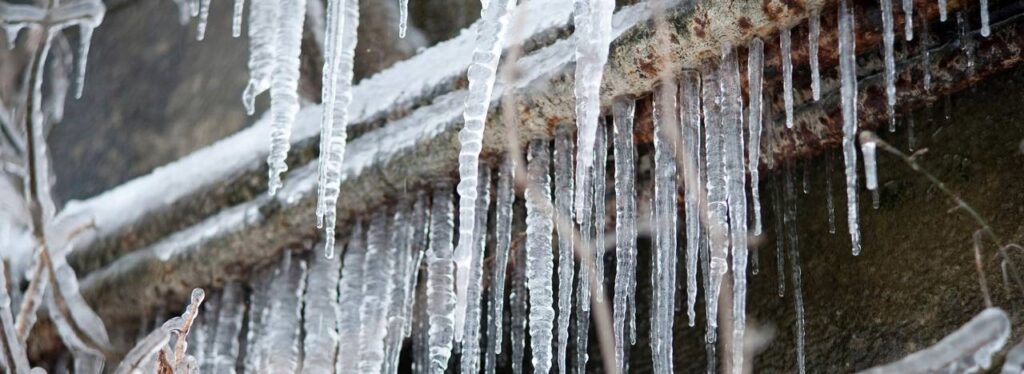Crucial Tips to Avoid Frozen Plumbing in Winter
Crucial Tips to Avoid Frozen Plumbing in Winter
Blog Article
Do you find yourself on the lookout for know-how about Winter Plumbing Precautions: Preventing Frozen Pipes?

Cold weather can wreak havoc on your pipes, particularly by freezing pipelines. Right here's how to stop it from happening and what to do if it does.
Intro
As temperatures drop, the threat of frozen pipelines increases, potentially bring about costly fixings and water damage. Recognizing how to avoid icy pipelines is important for property owners in cold climates.
Understanding Frozen Pipes
What causes pipes to ice up?
Pipes ice up when exposed to temperature levels listed below 32 ° F (0 ° C) for expanded periods. As water inside the pipes freezes, it broadens, taxing the pipe wall surfaces and potentially causing them to burst.
Threats and damages
Icy pipelines can result in supply of water disruptions, home damages, and expensive repairs. Ruptured pipelines can flood homes and trigger comprehensive structural damages.
Indicators of Frozen Water Lines
Recognizing icy pipes early can stop them from breaking.
Just how to determine frozen pipes
Try to find lowered water flow from faucets, uncommon smells or noises from pipelines, and visible frost on exposed pipelines.
Prevention Tips
Protecting susceptible pipes
Wrap pipelines in insulation sleeves or utilize warm tape to protect them from freezing temperature levels. Focus on pipes in unheated or exterior areas of the home.
Heating methods
Maintain indoor spaces sufficiently heated up, especially areas with pipes. Open up closet doors to enable cozy air to flow around pipes under sinks.
Protecting Outside Pipes
Garden pipes and outside taps
Separate and drain pipes garden hoses prior to winter season. Set up frost-proof faucets or cover outside faucets with shielded caps.
What to Do If Your Pipelines Freeze
Immediate activities to take
If you believe icy pipelines, keep taps open to eliminate stress as the ice thaws. Use a hairdryer or towels taken in warm water to thaw pipes slowly.
Long-Term Solutions
Architectural modifications
Think about rerouting pipelines far from outside wall surfaces or unheated locations. Add extra insulation to attic rooms, cellars, and crawl spaces.
Upgrading insulation
Invest in top notch insulation for pipelines, attic rooms, and walls. Appropriate insulation aids maintain regular temperature levels and lowers the danger of icy pipes.
Verdict
Preventing frozen pipelines requires positive measures and quick feedbacks. By recognizing the reasons, indicators, and safety nets, house owners can protect their pipes during cold weather.
5 Ways to Prevent Frozen Pipes
Drain Outdoor Faucets and Disconnect Hoses
First, close the shut-off valve that controls the flow of water in the pipe to your outdoor faucet. Then, head outside to disconnect and drain your hose and open the outdoor faucet to allow the water to completely drain out of the line. Turn off the faucet when done. Finally, head back to the shut-off valve and drain the remaining water inside the pipe into a bucket or container. Additionally, if you have a home irrigation system, you should consider hiring an expert to clear the system of water each year.
Insulate Pipes
One of the best and most cost-effective methods for preventing frozen water pipes is to wrap your pipes with insulation. This is especially important for areas in your home that aren’t exposed to heat, such as an attic. We suggest using foam sleeves, which can typically be found at your local hardware store.
Keep Heat Running at 65
Your pipes are located inside your walls, and the temperature there is much colder than the rest of the house. To prevent your pipes from freezing, The Insurance Information Institute suggests that you keep your home heated to at least 65 degrees, even when traveling. You may want to invest in smart devices that can keep an eye on the temperature in your home while you’re away.
Leave Water Dripping
Moving water — even a small trickle — can prevent ice from forming inside your pipes. When freezing temps are imminent, start a drip of water from all faucets that serve exposed pipes. Leaving a few faucets running will also help relieve pressure inside the pipes and help prevent a rupture if the water inside freezes.
Open Cupboard Doors
Warm your kitchen and bathroom pipes by opening cupboards and vanities. You should also leave your interior doors ajar to help warm air circulate evenly throughout your home.

As an enthusiastic person who reads on Prevent Frozen Pipes , I figured sharing that piece of content was sensible. In case you liked our page kindly be sure to share it. We enjoy reading our article about Preventing and dealing with frozen pipes.
Book Your Service Report this page